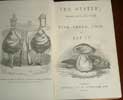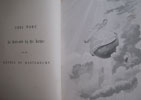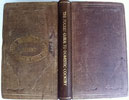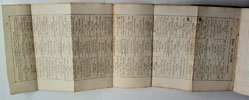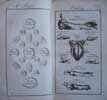THE NEW STYLE OF CONFECTIONARY.
BY BERNHARD LAMBRECHT MASTER CONFECTIOER TRANSLATED FROM THE GERMAN Published by MACLAREN & SONS, LTD. 38, Shoe Lane, London, and Glasgow.
FIRST EDITION. c. 1930. 265 x 230 mm. 4to. 2feps with a small printers device on the 2rd one. Title page with the same printers device on the verso. p5 Contents. 6-132. 1fep. Original cream coloured cloth full binding with pressed brown text on front board and spine. The binding with some staining indicative of a slight kitchen spillage. Text block ‘as new’. Numerous large beautiful black and white plates and 9 full pages with colour plates tipped in, some with tissue guards. Very good plus.
- Bernhard Lambrecht, the son of a pastry chef, attended from 1907 to 1916 at the Great School in Wolfenbüttel. After graduation he was a soldier in the First World War. He then graduated as a pastry chef after an apprenticeship in the Wolfenbüttel Confectionery run by his father. In 1926, in Leipzig he sat for his Master's examination for the Confectionery trade. In 1927 he founded in Wolfenbüttel a private school for the ‘new pastry art’. He headed the school as a director until 1969. The other great confectioner's institution, the Master School of Confectioners, existed from 1938 until 1948. It was then taken over by the German Federal Confectioners guild, and later re-named the ‘Federal College for the Confectionery Trade’. The Federal College was up until the 1990s, the only training institution for inter-company confectioner training in Germany. Many trainees also came from abroad. From Japan, the USA and Canada, Brazil, Holland, Sweden and Norway. In 2004 the school was closed. Lambrecht, pursued the goal of lifting his profession to the highest level of the style of the Weimar Bauhaus. The Bauhaus was founded as an art school in 1919 by Walter Gropius in Weimar. The nature and conception was something completely new. It represented a merging of art and craft. It is today the most influential educational institution in the field of architecture, art and design. Its continues today as a major force in shaping the image of German designs abroad. In Germany, Bernhard Lambrecht is characterized as an internationally important pioneer and innovator of his profession. To this day Lambrecht’s influence on the modern café culture is immense. This 1930 Confectionary book he published testifies to his precise, beautiful craftsmanship. On page 7, Lambrecht declares that Confectionary is Art (with a capital A). This is a sentiment shared by many modern chefs who are also under the illusion that they are artists, and what they create is art. We can accept this is not true, if we read about Socrates' printed conversation with a learned pundit, where he clarifies after a long dialogue that “art must and does, with the use of mundane materials, elevate the conscious above the everyday existance”. Great cooking cannot do this, but it does cause wonder and awe at the craftsmanship displayed, but the final truth is, it ends up as just satisfying hunger. In conclusion, the most that can be said to describe great cooks, is that they are great artisans. Bernhard Lambrecht was one such artisan. This printed work conveys his craftsmanship beautifully. He must be accepted as one of the most important contributors to the famous German confectionary trade. This is a very handsome and well laid out book with many beautiful plates.






click on image to enlarge

Modern category
ref number:
11223 








